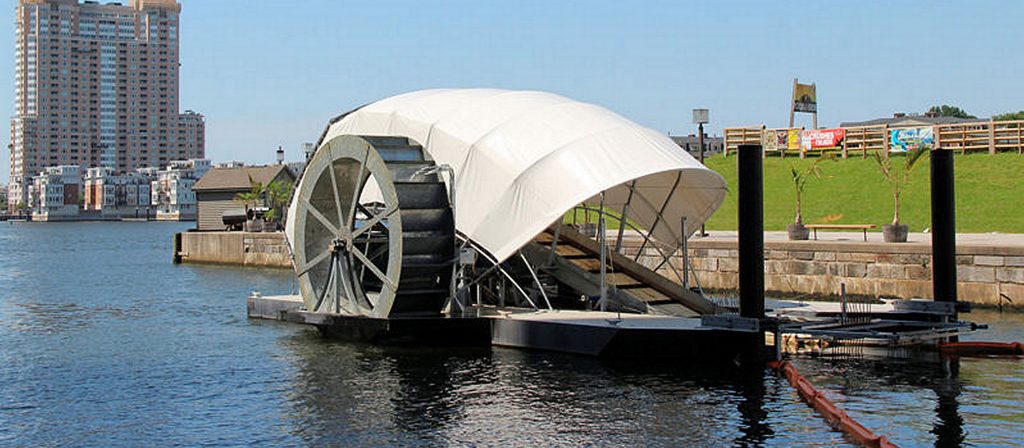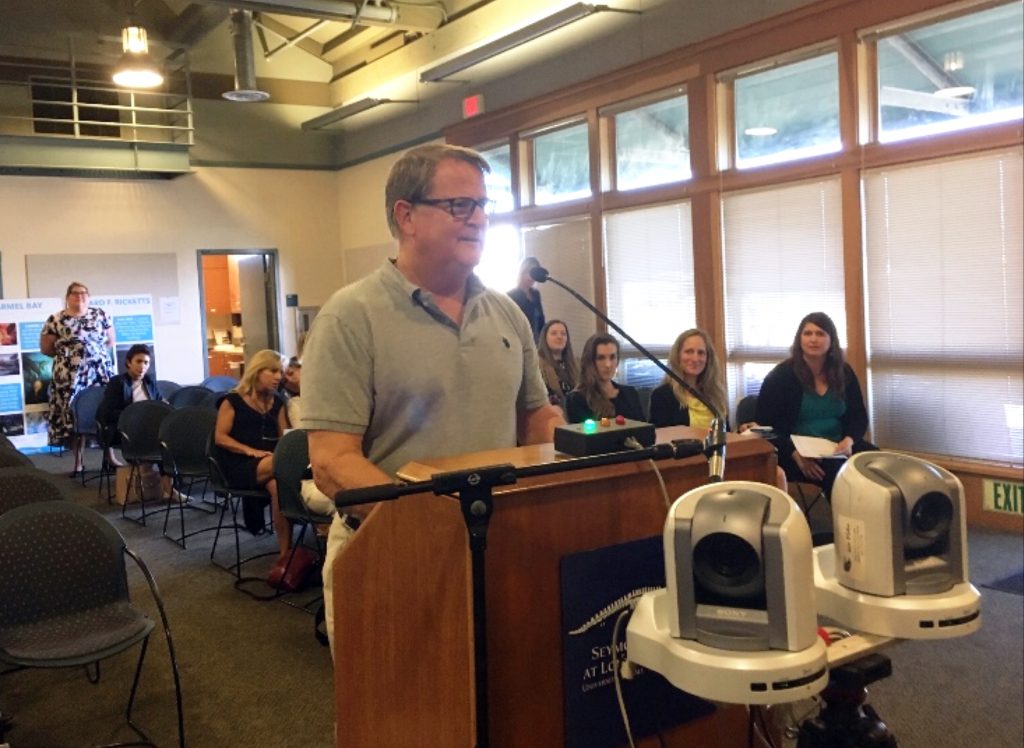
— Photo courtesy of Billy Dutton/Baltimore Waterfront
The city was recently awarded a $1.68 million grant to move forward with a solar-powered, trash-collecting water wheel in Newport Bay.
Newport Beach Mayor Marshall “Duffy” Duffield traveled to Santa Cruz to address the Ocean Protection Council at its Oct. 25 meeting about the Newport Bay Water Wheel Project.
Duffield explained the project and its importance to the Council, calling it it a “marvelous solution to a seemingly impossible problem.”
“Newport Beach has tried for years to contain the trash that enters the bay from upstream and the water wheel is, by far, the best solution we’ve found,” Duffield said in a prepared statement from the city. “We are confident it will result in marked improvements to water quality and the cleanliness of our bay and ocean beaches.”
The wheel, which aims to capture garbage flowing down San Diego Creek before it ends up in the bay, the harbor, and the ocean, got a unanimous nod of approval by Newport Beach City Council on Sept. 25.

— Photo courtesy city of Newport Beach ©
The aim is to help alleviate some of the heavy trash load floating into the bay from upstream cities, Public Works Director Dave Webb previously explained. About 80 percent of the material that enters the bay comes from San Diego Creek.
“We are very grateful that the Ocean Protection Council provided us with such a generous grant and are excited to bring our water wheel project to fruition,” Duffield said in the city’s press release.
Newport Beach is expected to be the first West Coast city to use the device.
Other coastal cities have used the water wheel with success. The primary example (and what Newport’s water wheel is based on) is Baltimore, which uses a solar powered water wheel to collect trash from Jones Falls River before it enters the harbor.
Baltimore’s “Mr. Trash Wheel,” which has its own twitter and facebook page, has removed more than 1.5 million pounds of trash since its inception in May 2014.
The water wheel is funded through the grant from Ocean Protection Council of $1.68 million, as well as $12,000 from Help Your Harbor (of that amount, outdoor clothing company, Patagonia, came forward with $10,000) and city budget of $8,000 to fund the environmental portion of this work. Staff anticipates the OPC grant funds will cover the design and construction cost of the project for a total project budget of $1.7 million.
The system is basically a stationary, floating barge with a conveyer belt on one end, a standard-sized trash dumpster on the other end, and a water wheel in the middle.
Floating booms will funnel trash toward the device. Forks will rake the debris toward a conveyor belt and the wheel will use the water’s current to power the conveyor belt and lift the collected trash into a dumpster positioned on a barge docked to the device.
When the dumpster is full it’s removed and a new, empty one is put in its place. An electric boat would slowly pull the full bin to shore for disposal.
The entire thing would be approximately 50 feet long and 24 feet wide.
It would be placed approximately on the east side of the Jamboree Road bridge in the San Diego Creek, which is the entry point for much of the debris coming into the bay.
Some residents have criticized that it may be an eyesore or that it’s in their line of sight
Supporters have responded that it will beautify the bay, harbor, and ocean in the long-run.
Staff hopes to get the required permitting by summer of 2020. A more detailed design should be ready by winter 2020, with construction proposed to start around spring or summer of 2021. Construction should take about six to eight months.




